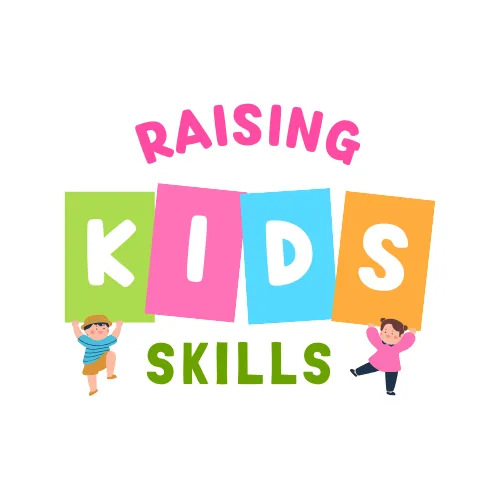How to Deal with Your Child’s Adolescence
The teenage years can be a wild ride for parents. They bring excitement, frustration, and everything in between. Your child is now on a journey of growth, and it’s normal to feel overwhelmed. But remember, this time is crucial for your child’s development into a healthy, independent adult.

Adolescence is a time of big changes. Your child is moving from the stability of childhood to the exciting, sometimes turbulent, world of teenage life. It’s a time for self-discovery, forming a unique identity, and seeking more independence. These changes can shake up the parent-child relationship you’ve known for years.
Key Takeaways
- Adolescence is a crucial stage of development, marked by significant changes in physical, cognitive, emotional, and social aspects.
- Parents need to adapt their approach, respecting the child’s growing need for autonomy while maintaining a strong parent-child relationship.
- Open communication, setting healthy boundaries, and supporting your teen’s mental health are key to navigating this transition successfully.
- Fostering independence while maintaining connection is essential for a smoother transition into the teen years.
- Prioritizing self-care as a parent can greatly influence your teen’s behavior and decision-making.
Understanding the Transition from Childhood to Adolescence
Adolescence is a key time in life, filled with big changes. These changes happen in many areas like body, mind, feelings, and social life. This shift from being a kid to becoming an adult is both thrilling and tough for teens and their parents.
Physical and Cognitive Changes
Early adolescence, from 10 to 13, brings the start of puberty. This means changes like a deeper voice, growing taller, and getting secondary sex traits. These changes keep happening into middle adolescence, ages 14 to 17.
Girls might start their period around 12, a few years after their breasts start to grow.
Adolescents also see big changes in their thinking. The brain parts that help with making decisions and controlling impulses don’t fully grow until the 20s. This can make teens more likely to take risks and make mistakes, especially in their teens.
Emotional Development Milestones
Emotionally, teens feel more deeply and in new ways. They start to figure out who they are, deal with mood swings, and argue with parents more. Keeping a good relationship with parents can help teens stay mentally healthy, with less depression and drug use.
Social Identity Formation
Socially, teens start to make closer friends and get interested in dating. They also develop their own personality and opinions, sometimes questioning what others think. Teens in late adolescence (18-21 and up) tend to be more individual and focused on their future goals and values.
It’s important for parents and caregivers to understand the many changes teens go through. This helps them support their kids during this important time in their lives.
| Adolescent Stage | Age Range | Key Developmental Milestones |
|---|---|---|
| Early Adolescence | 10 to 13 years | Onset of puberty, voice changes, growth spurts |
| Middle Adolescence | 14 to 17 years | Continued physical development, increased cognitive abilities, emotional changes, social identity formation |
| Late Adolescence | 18 to 21+ years | Completion of physical development, improved impulse control and risk evaluation, stronger sense of individuality and future aspirations |
“Approximately half of the pathologies developed in adulthood find their onset during the transition from childhood to adolescence.”
By knowing about the changes in body, mind, feelings, and social life during adolescence, parents and caregivers can better support their teens. This helps teens face the challenges and chances that come with growing up.
How to Deal with Your Child’s Adolescence: A Parent’s Guide
Dealing with your child’s adolescence can be tough. But, with the right steps, you can build a strong bond. As a parent, guiding your teen through this phase is key.
Good parenting in adolescence means talking openly, being consistent, and keeping a loving home. Encourage your teen to join clubs, volunteer, and get involved in community activities. Respect their privacy and listen to their views while guiding them.
- Use praise and encouragement to help your teen feel good about themselves and achieve goals.
- Let your teen help set family rules and expectations. This helps them feel responsible.
- Set clear rules and consequences. But, be ready to change them as your teen grows and shows more responsibility.
Remember, your teen’s growth in this period is natural. Your job is to create a supportive space for their development and independence.
| Parenting Strategies | Benefits |
|---|---|
| Open Communication | Builds trust and understanding |
| Consistency | Provides structure and security |
| Warm Family Environment | Promotes emotional well-being |
By using these strategies, you can handle the ups and downs of parenting teenagers. You’ll help your child grow into a confident, responsible young adult.
“The most important thing that parents can do for their children is to listen to them.”
Building Open Communication Channels
Creating a strong bond with your teenager is key during their teenage years. One great way to do this is by opening up communication. Spending quality time with your child lets you have deep talks. This helps you understand their feelings and what they’re going through.
Active Listening Techniques
When talking to your teenager, active listening is crucial. This means really listening to what they say and showing you care. Ask questions that show you’re interested in their thoughts. This builds trust and makes them more likely to share with you.
Creating Safe Spaces for Dialogue
It’s important to make a safe place for talking. Let your teen know you’re there to listen without judging. Don’t try to fix everything right away. Just let them talk and feel heard.
Managing Difficult Conversations
Teenagers may bring up tough topics like sex, drugs, or mental health. Talk to them with kindness and a willingness to listen. Focus on understanding, not just telling them what to do. This helps them feel safe to talk openly with you.
Good communication is the heart of a strong relationship with your teenager. By listening well, making a safe space for talks, and handling tough topics with care, you can grow closer. This support is vital for their growth and well-being during these important years.
| Key Active Listening Techniques | Benefits of Creating Safe Spaces |
|---|---|
| Maintaining eye contact Rephrasing and reflecting back Asking open-ended questions Avoiding interruptions Showing empathy and validation | Builds trust and rapport Encourages open and honest communication Helps identify underlying issues Strengthens the parent-child bond Fosters a sense of emotional safety |
Setting Healthy Boundaries and Rules
As your child grows into adolescence, setting healthy boundaries and rules is key. This helps them grow independent and responsible. It also keeps them safe and structured.
Begin by talking and agreeing on rules with your child. This makes them feel more involved and committed. Use positive discipline to guide their actions, not punish them. Stick to the rules and have consequences when needed.
It’s important to act the way you want your teen to act. Make sure everyone follows the rules, including you. This shows fairness and accountability.
| Healthy Boundary-Setting Strategies | Benefits |
|---|---|
| Negotiate rules and boundaries with your teen Use a positive, guiding approach to discipline Enforce rules consistently with appropriate consequences Model the respectful behavior you expect from your teen Apply family rules equally to everyone | Fosters teen independence and responsibility Maintains a sense of safety and structure Promotes clear communication and mutual understanding Encourages respect and accountability Strengthens family dynamics and cohesion |
Setting healthy boundaries for teens and family rules guides your child through teen discipline. It helps them learn important skills for this life-changing time.
“The most important thing that parents can teach their children is how to get along without them.” – Frank A. Clark

Supporting Your Teen’s Mental Health and Self-esteem
As a parent, you are key in helping your teenager’s mental health and self-esteem. It’s important to understand the challenges of being a teenager. This knowledge helps you guide them through this important time in their life.
Recognizing Warning Signs
Watch for changes in your teen’s behavior that might show mental health issues. Look out for signs of depression like sadness, losing interest in things, or changes in sleep and eating. Anxiety can show as too much worrying, physical symptoms, or pulling away from friends.
Promoting Positive Self-image
Encourage your teen to do things they enjoy, like sports or arts. Give them positive feedback and celebrate their wins, big or small. Building their self-worth helps them face the ups and downs of being a teenager.
Dealing with Peer Pressure
Peer pressure can be tough for teens. Teach them to stand up for what’s right and make good choices. Talk about the value of friends who support their growth. Encourage them to share their struggles with friends and family.
By spotting warning signs, boosting self-esteem, and helping with peer pressure, you’re crucial in supporting your teen’s mental health. This support is vital during their formative years.
| Key Statistic | Description |
|---|---|
| 37% of high school students reported experiencing poor mental health during the COVID-19 pandemic. | The COVID-19 pandemic has had a significant impact on the mental health of teenagers, with over a third of high school students reporting poor mental health during this time. |
| 44% of high school students reported feeling persistently sad or hopeless over the past year. | Nearly half of high school students have experienced persistent feelings of sadness or hopelessness, which can be indicative of mental health challenges. |
| Approximately one in five high school students seriously considered suicide in the past year. | Suicide is a major concern among teenagers, with around 20% of high school students reporting having seriously considered taking their own life in the past year. |
Navigating Social Media and Digital Challenges
Teens face a changing digital world, and parents must guide them. It’s important to understand how social media affects their well-being. This helps teens develop good digital habits.
Research shows that less social media use can improve body image and self-esteem. Talking openly and setting clear rules about social media helps teens grow emotionally and find their identity.
Experts suggest waiting until kids are 12 to introduce social media. Parents should talk with teens about their online activities. It’s also key to show positive online behavior ourselves.
| Key Challenges | Potential Impacts |
|---|---|
| Exposure to harmful or inappropriate content | Heightened stress and anxiety |
| Reduced face-to-face interaction | Diminished social skills and emotional well-being |
| Pressure to conform to societal standards | Low self-esteem and negative self-image |
| Cyberbullying and online harassment | Anxiety, depression, and emotional distress |
| Fear of missing out (FOMO) | Loneliness and social isolation |
By tackling digital challenges and encouraging open talks, parents can help teens confidently use the internet. This builds resilience and self-worth.
“Social media can be a powerful tool for connection and inspiration, but it’s crucial for parents to help their teens develop a balanced and mindful approach to its use.” – Dr. Anthony Johnson, Child Psychologist
Social media has its benefits, like connecting people and inspiring them. But it can also lead to overuse and harm mental health. Parents and teens must work together to set healthy limits and habits. This ensures a safe and balanced use of teens and social media.

The secret to handling digital parenting in adolescence is open communication and teamwork. It’s about creating a healthy, balanced relationship with technology in the family.
Addressing Risk-Taking Behaviors
Adolescence is a time when some risk-taking is normal. The teenage brain is still growing, especially parts that help with planning and controlling impulses. This can lead to quick decisions without thinking about the outcomes.
Understanding Normal vs. Concerning Behaviors
Risky behaviors often peak at 15-16 years old and then decrease. Some risk-taking is good, like in rock climbing or martial arts. But, some behaviors are concerning and need help.
- Underage drinking, drug use, and unsafe sex can have serious effects.
- Aggressive or illegal actions, like vandalism or violence, also need support.
Prevention and Intervention Strategies
As a parent, you’re key in guiding your teen. Talk openly, set clear rules, and build a strong bond. This helps your child make smart choices and avoid danger.
- Encourage safe activities that let your teen explore in a safe way.
- Make sure your teen has friends through sports, events, or clubs to fight peer pressure.
- Get professional help if your teen does dangerous things like substance abuse or breaking the law. This helps create a plan to help them.
Handling adolescence needs trust, responsibility, and guidance. By knowing about teen risk-taking and using the right strategies, you can help your child make safe choices. This way, they can grow into a strong, well-rounded person.
| Statistic | Implication |
|---|---|
| Risky behavior peaks at around 15-16 years old and tends to decrease by early adulthood. | Adolescence is a crucial time to guide and support teens in making safe decisions, as their risk-taking tendencies are at their highest during this period. |
| The teenage brain’s parts responsible for planning and impulse control do not fully mature until about age 25, contributing to quick decision-making without considering consequences. | Parents and caregivers need to be proactive in helping teens develop critical thinking and impulse control skills to navigate risky situations effectively. |
| Encouraging safe risk-taking activities such as rock-climbing, martial arts, canoeing, and mountain biking can redirect thrill-seeking energy. | Providing teens with positive outlets for their adventurous spirit can help channel their risk-taking tendencies in a healthy direction. |
“Adolescence is about building trust and responsibility, and parents need to positively influence teen risk-taking behavior.”
Fostering Independence While Maintaining Connection
As your child grows into adolescence, finding the right balance is key. You should give them more freedom and responsibilities as they show they can handle it. This helps them learn to solve problems and make good choices.
Keep your bond strong by spending quality time together and talking openly. Listen to your teen without judging them. This creates a safe space for them to share their thoughts and feelings.
Your job is to help your teen become an adult. Teach them important life skills and support their dreams. By doing this, you prepare them for the future and strengthen your relationship.
Don’t hesitate to see other articles on my bloghttps://www.skillsraisingkids.com/
FAQ
What are the typical physical, cognitive, emotional, and social changes during adolescence?
Adolescence starts between ages 9-12. It brings big changes in physical, cognitive, emotional, and social areas. Teens start puberty, get better at thinking and working, and feel deeper emotions. They also form strong friendships and develop their own opinions.
How can parents effectively communicate with their teenage children?
Talk openly and listen well to your teen. Make sure they feel safe sharing their thoughts. Have regular one-on-one time and listen without interrupting. Be ready to talk about tough topics in a way they can understand.
What are some strategies for setting healthy boundaries and rules for teenagers?
Work with your teen to set rules. Use positive ways to guide their behavior. Stick to your rules and treat everyone fairly. Let your teen help make family rules to make them feel involved.
How can parents support their teen’s mental health and self-esteem?
Watch for signs of mental health issues and encourage activities that boost self-esteem. Teach teens to resist bad peer pressure and choose good friends. Talk about being positive and address body image concerns, especially for girls.
How can parents help teenagers navigate social media and digital challenges?
Talk about safe social media use and the effects of online actions. Set rules for screen time and create a family media plan. Keep devices out of bedrooms and use media to talk about values and culture.
How can parents address risk-taking behaviors in teenagers?
Understand that some risk-taking is normal and can be positive. Talk about the dangers of things like underage drinking and unsafe sex. Teach teens to think about risks and make smart choices, and have plans for dangerous situations And hormonal changes
A resource for understanding the hormonal changes of the teenage childhttps://cambspborochildrenshealth.nhs.uk/child-development-and-growing-up/hormones-puberty-and-sexuality/
How can parents foster independence in their teenagers while maintaining a strong connection?
Give more freedom and responsibilities as your teen grows up. Encourage them to solve problems and make decisions. Stay close through shared activities and open talks. Teach life skills and talk about their future plans.







